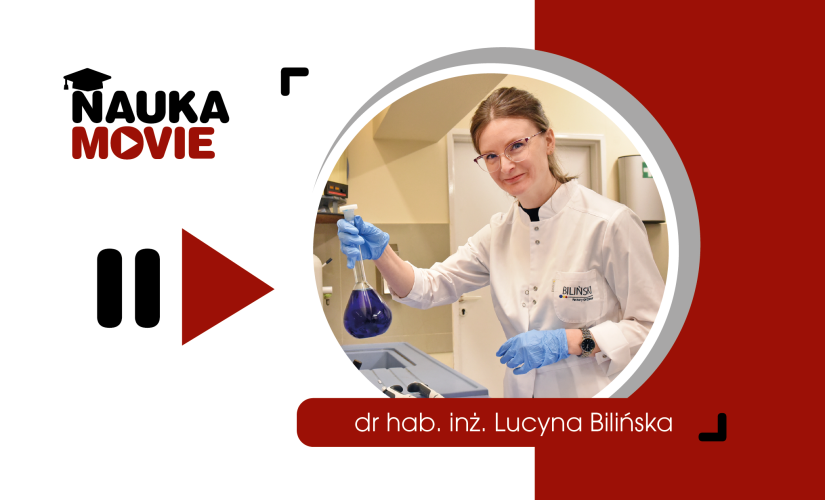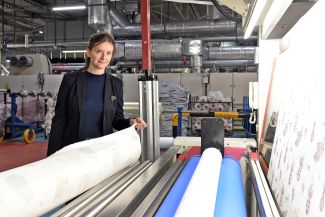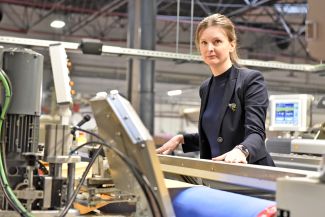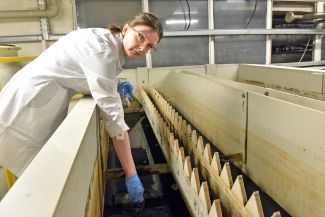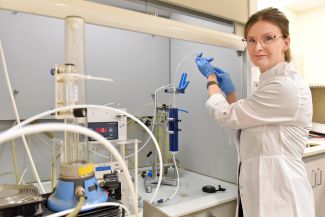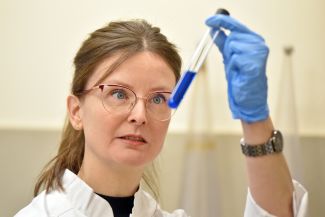What challenges does the textile industry face in terms of environmental pollution?
Clothing and textile manufacturers have been bucking our consumer needs for years. As part of the 'fast fashion' trend, fashion brand creators present six to as many as twelve collections a year, promoting increased sales of their products. In contrast, we as consumers rarely consider the environmental consequences of buying yet another t-shirt. It is important to realise the other face of the fashion industry. Scientists estimate that up to 10 per cent of global greenhouse gas emissions come from the production of textiles. At the same time, 5 per cent of landfill space is taken up by textile waste, while 20 per cent of total freshwater pollution is the result of textile processing. I think these figures give an overall picture of what challenges textile manufacturers are facing. Currently, the most promoted environmental measures in the textile industry are recycling and upcycling, i.e. closing the raw material cycle.
What are the characteristics of wastewater from the textile industry?
The treatment of textile wastewater presents scientific and technological challenges. It is mainly water from the chemical processing of fabrics and knitted fabrics, their washing, bleaching, dyeing and printing. It is known that the wastewater from the above-mentioned operations will mainly contain chemicals and fibre fragments. Therefore, they are characterised by intense colouration, high salinity, and a mostly alkaline pH. These characteristics make textile wastewater difficult to biodegrade, i.e. not friendly to the organisms that form the basis for the operation of group wastewater treatment systems, i.e. the Lodz GOS. The consequence of sending textile wastewater to collective treatment complexes may even be that they malfunction. Some of the textile pollutants may not be removed in the treatment plants and re-enter the environment as secondary pollution. The solution to this problem is to use appropriately developed treatment methods dedicated to the removal of textile pollutants.
What are the current methods used to treat wastewater from this business sector?
It may be hard to believe, but globally, the bulk of textile industry wastewater is not treated at all and goes straight into the environment. Most of these cases are in Asian countries. In highly developed countries, recent studies show that around 73% of companies discharge their wastewater into the municipal sewage system without pre-treatment. This means that wastewater goes to group treatment complexes. However, specially dedicated on-site treatment plants for textile wastewater are appearing with increasing frequency. Polish textile companies are following European trends and a dozen such companies can be named. In contrast, the treatment methods currently used on an industrial scale are typical and include mostly membrane technology, coagulation-flocculation, activated sludge biodegradation, ozonation. The use of the classic Fenton reagent is also popular, although this purification method has a number of limitations.
What is the electro-oxy-Fenton method?
As I mentioned, Fenton's reagent treatment of textile wastewater is the most popular. The operation of this classic method involves the formation of a hydroxyl radical from hydrogen peroxide in the presence of iron ions. The hydroxyl radical is one of the strongest known oxidisers and is therefore able to break down many of the contaminants found in wastewater. The Fenton reagent is very effective in removing the staining that is so characteristic of textile wastewater. However, this process in its classical form has many limitations, such as the narrow pH range in which it can be used. In addition, in my previous studies I have observed a number of phenomena that inhibit the process, such as the presence of salinity.
Through previous research, I developed a way in which the basic Fenton process could be used so that its advantages could be exploited, and its disadvantages reduced in a new form. This is how the idea of the electro-oxy-Fenton process was born. It is a hybrid of the classic chemical Fenton reagent and the electro-chemical process. By using a new electrode material, it will be possible to produce coagulant and reactive oxygen species simultaneously. The new process will therefore be multifunctional. The premise of the electro-oxy-Fenton method is to remove both dissolved contaminants, e.g. dyes, but also suspended particles in a single process operation. Particularly important in the new method was the removal of microfibres, which are a source of microplastics.
This problem is particularly important due to the increasing degradation of the seas and oceans. An important element of your research is the implementation of solutions from the laboratory to the macro scale, in an operating company. What does the preparation of such solutions look like?
The problem of microplastics in textile wastewater is relatively new. On an industrial scale, there are as yet no dedicated systems for the removal of this type of pollutant. In contrast, innovative environmental engineering solutions are mostly realised at laboratory scale and rarely go beyond the experimental phase. My aim is primarily to develop a process that can realistically be applied at large scale. I have been working in industry for 14 years, so I already consider the practical applicability of a solution at the idea development stage. During the course of my research, I gradually scale up the device, trying to replicate industrial conditions as closely as possible. I often enlarge the original device to a quarter-technical scale. I take into account the conditions of later use and operation. The safety of future operators and equipment capabilities (pumps, fittings, power supplies) are also important to me.
What are the aims of your project under the Leader programme?
I am pleased that my project entitled FOR-TEX-FENTON has been positively evaluated by experts and qualified for funding under the LIDER XIII competition. The tasks are scheduled to be implemented from September 2023 to August 2026, i.e. over a period of three years. After this time, I assume the development of a fully functional textile wastewater treatment system to remove typical pollutants and microplastics. The basis of the treatment system will be the new electro-oxy-Fenton process. We are conducting research on real wastewater and the system will be tested on an enlarged scale, under real conditions in industry.
Why is it important to be a scientist?
I don't like to limit myself to seeing the results of my work on paper. My greatest satisfaction comes from being able to apply my ideas in practice. I get real joy when my work has a practical dimension, and someone benefits from its results in a real-world application.
Agnieszka Garcarek-Sikorska

